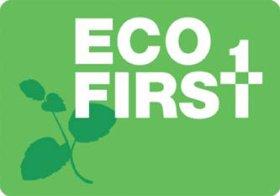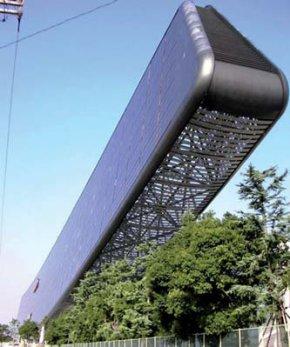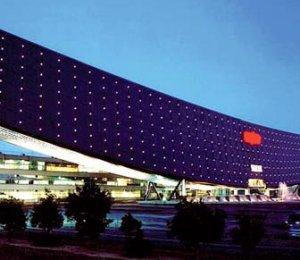Seeing the Light

Japanese companies continue to push their “eco-friendly” products but just how efficient are they?
By Scott Cavanaugh
When the Kyoto Protocol was adopted in December 1997, Japan instantly became one of the leaders in reducing greenhouse gas emissions. During that time, the Japanese government, along with many Japanese corporations, publicized sweeping changes that would be enacted to counter the negative effects of the previous 150 years of industrial activity. The idea was that Japan, with its eco-friendly ideas, would become the envy of the other industrialized nations. But this has not become reality. As the country continues to struggle with various economic issues, many companies have abandoned their environmental aspirations. So what does this mean for us, the average consumer of Japanese products?
 Sanyo’s Solar Ark building
Sanyo’s Solar Ark building
A consumer is usually looking for a product that will either save them money at the time of purchase or will help save money in the future via reduced electricity expenses. With businesses realizing that they can enhance their image by offering eco-friendliness while saving consumers money, companies from Panasonic to Toyota are increasingly marketing their products with a seal of environmental approval: The Eco Stamp (see top of page).
These symbols may look good for the manufacturer but what exactly do they mean? Can these products really help the environment?
Criticism leveled at products with eco stamps include that they don’t take into account the environmental impact of production methods and that the tests are done using high-energy use settings that normally people do not use. Often cost saving can be negligible. According to the Energy Saving Trust, the average costs saved on “eco-friendly” washing machines, for example, are only (up to) ¥1,600 per year.
But despite the dubious benefits of many so-called “eco” products, there are some technologies that currently exist that are making an impact. Solar panels, for instance, help consumers immediately reduce their utility bills. "despite the dubious benefits of many so-called “eco” products, there are some technologies that currently exist that are making an impact"While they have been around for a while, solar panels have been gaining popularity in the last few years as families and corporations try to reduce their utility expenditures.
Electronics giant Sanyo has been producing solar cell technology for more than 30 years. In the early ‘90s, the company began to market its solar technology to households with its first consumer-level product, the HIT (Heterojunction with Intrinsic Thin layer) solar cell. The technology achieved a cell conversion efficiency of 22.3%, the best at the time for similar cells.
Sanyo’s newest product, the HIT Double solar cell, stands out from the competition due to its ability to maximize power generation within a fixed amount of space. The solar panels also have a double glass structure that enhances aesthetics and allows light and shadows to shine through the panels. The HIT double solar panel could be applied to siding, facades, bus shelters, carports, decks and porch coverings, and vertical installations.  Sanyo’s Solar Ark buildingBut, the most prominent use of this technology is on the landmark Sanyo Solar Ark building in Gifu prefecture. The eco structure, comprised of 5,046 solar panels, produces about 630 kW of power, or 530,000 kWh of clean energy per year.
Sanyo’s Solar Ark buildingBut, the most prominent use of this technology is on the landmark Sanyo Solar Ark building in Gifu prefecture. The eco structure, comprised of 5,046 solar panels, produces about 630 kW of power, or 530,000 kWh of clean energy per year.
The use of solar panels makes sense in rural areas, but what about major urban centers such as Tokyo? For the majority of Tokyoites, home ownership is a very distant reality with most living in apartment complexes. Yet if real estate owners and the authorities can be convinced that solar technology would prove cost effective in the long-run, even Tokyo, with its high level of power consumption, could be ready to take on clean energy output sources.
Would this help Japan meet the emission standards set at the Kyoto Protocol? It’s difficult to say for sure. However, what we can say is that solar technology will help the consumer save not only the environment, but also utility bills. JI
More information about the HIT solar panels: www.sanyo.co.jp/clean/solar (Japanese)





